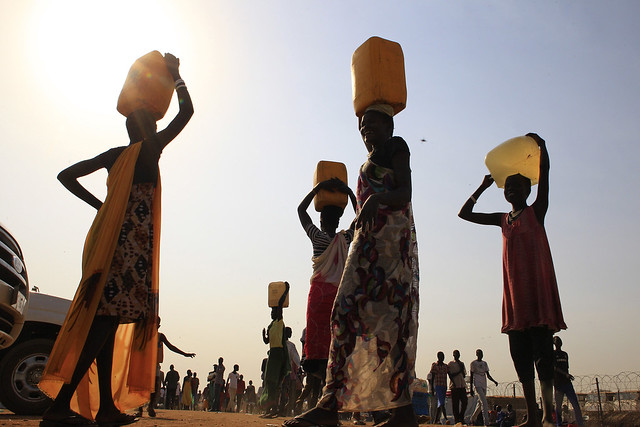Author: Thomson Reuters Foundation
South Sudanese carry water containers on their heads at Tomping camp, where some 15,000 displaced people who fled their homes are sheltered by the United Nations, near the capital Juba. January 7, 2014. REUTERS/James Akena

Passengers stand in a packed public bus in downtown Lima. Bogota, Mexico City and Lima in Peru – Latin American cities – were named as the three capitals with the least safe transport systems for women in the Thomson Reuters Foundation poll of more than 6,550 women and gender and city planning experts. Women in Latin America say they face a wide range of threats on public transport, and not enough is done to ensure their safety. March 15, 2014. REUTERS/Enrique Castro-Mendivil
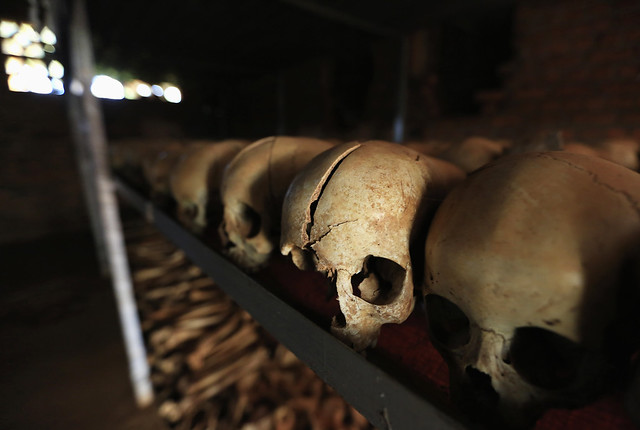
Preserved skulls are laid in rows in a Catholic church in Nyamata, Rwanda. Hundreds who sought refuge within the church compound were brutally killed during the three-month genocide of Tutsis and moderate Hutus in 1994. April 9, 2014, REUTERS/Noor Khamis
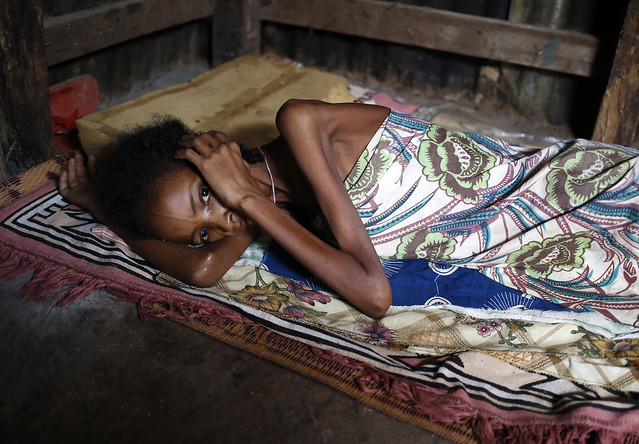
An internally displaced Muslim woman who lost her six-day-old baby yesterday, lies in a house in the town of Boda, Central African Republic. April 15, 2014. REUTERS/Goran Tomasevic

Fatema holds a picture of her son Nurul Karim as she stands in front of her slum house in Savar, Bangladesh. Nurul Karim and Fatema’s daugher Arifa, who were working on the fifth floor of Rana Plaza, died when the factory building collapsed on April 24, 2013. A year later, hundreds of survivors and victims’ families are still struggling to rebuild their lives. More than 1,100 died in he world’s worst factory disaster. April 21, 2014. REUTERS/Andrew Biraj

Nine-year-old Tin Aung Zin, who is in a coma, is held by his sister in their house near the Thet Kae Pyin camp for internally displaced people in Sittwe, Rakhine state, Myanmar. In February, Myanmar expelled Medecins Sans Frontieres-Holland, the main aid group providing healthcare to more than half a million Muslim Rohingya in western Myanmar. An attack in March on NGO and U.N. offices by a Rakhine mob led to the withdrawal of other groups providing healthcare and other essential aid to another 140,000 Rohingya living in camps. April 23, 2014 REUTERS/Minzayar

The relative of a woman who gave birth to twins holds one of the day-old babies before leaving for the Chad border, escorted by troops from the African Union operation in Central African Republic. Over 1,000 Muslims who have been sheltered from sectarian violence in PK12, part of the capital Bangui, have now been evacuated towards the northern towns of Kabo and Sido on the border with Chad. April 29, 2014. REUTERS/Siegfried Modola

Displaced Afghans carry their aid on a donkey near the site of a landslide in Badakhshan province. Grief-stricken, desititute Afghan villagers vented anger with their government as they scrambled for emergency aid, three days after landslides engulfed 300 houses in Aab Bareek, a village in the Argo district of Badakhshan, a remote and mountainous northeastern province. May 5, 2014. REUTERS/Mohammad Ismail

A mother and child who have fled from fighting in Slaviansk between Ukrainian government forces and separatists, stand in their temporary accommodation in the town of Nizhnaya Krinka in eastern Ukraine. June 4, 2014. REUTERS/Maxim Zmeyev
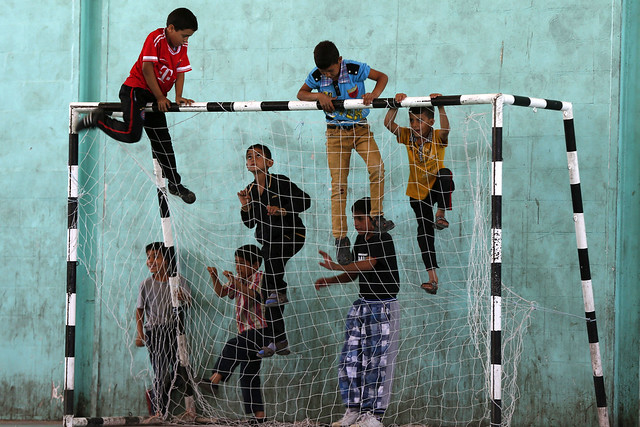
Syrian and Palestinian refugee children climb up a goalpost before the start of a soccer match in the Al-Baqaa Palestinian refugee camp, near Amman. The football league between young Syrian and Palestinian refugees and Jordanian youth aims to foster positive relationships between communities, fighting exclusion and marginalization and promoting trust and friendship. June 17, 2014. REUTERS/Muhammad Hamed
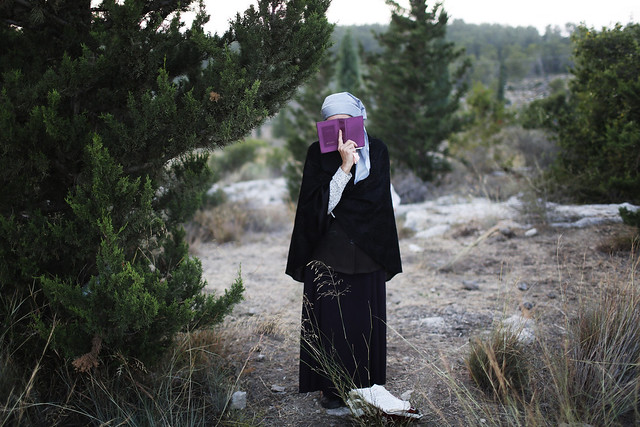
A Jewish woman prays during the joint funeral of three Israeli teenagers who were abducted and killed in the occupied West Bank, in the Israeli city of Modi’in. Israel blamed their killing on the Palestinian Islamist group Hamas, which has neither confirmed nor denied involvement. July 1, 2014. REUTERS/Finbarr O’Reilly
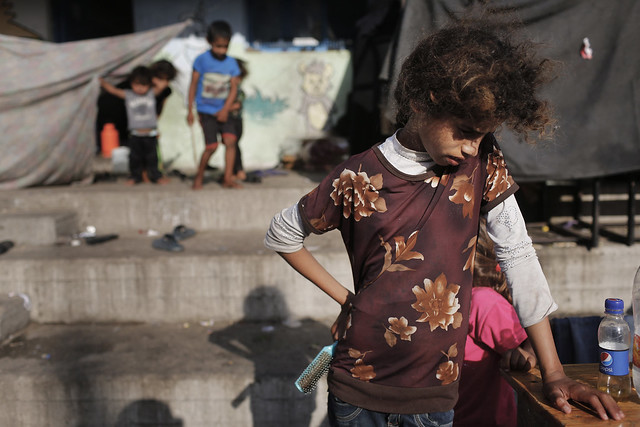
Palestinian children take refuge from an Israeli ground invasion and air strikes at a United Nations school in Jabaliya in the northern Gaza Strip. Israeli forces are trying to stop militants from Hamas and their allies from firing rockets into its territory. July 25, 2014. REUTERS/Finbarr O’Reilly
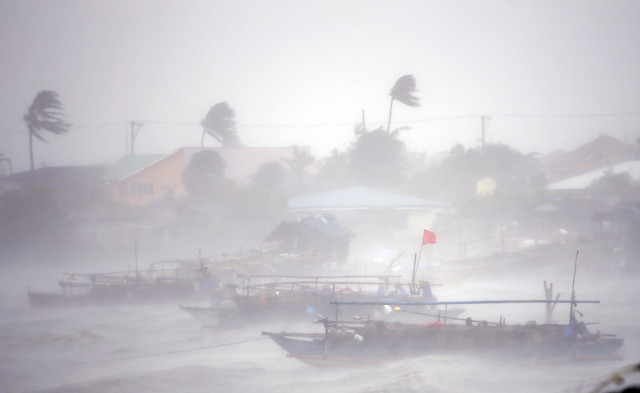
Fishing boats are pictured amid heavy winds and rain brought by Typhoon Rammasun as it hit the town of Imus, Cavite, southwest of Manila, moving later to hit the capital itself. Philippine authorities evacuated almost 150,000 people from their homes and shuttered financial markets, government offices, businesses and schools. July 16, 2014. REUTERS/Erik De Castro

A man has his temperature taken using an infrared digital laser thermometer at the Nnamdi Azikiwe International Airport in Abuja. Nigeria managed to stop Ebola from spreading by finding and isolating every contact of the small number of people who contracted the tropical disease. August 11, 2014. REUTERS/Afolabi Sotunde
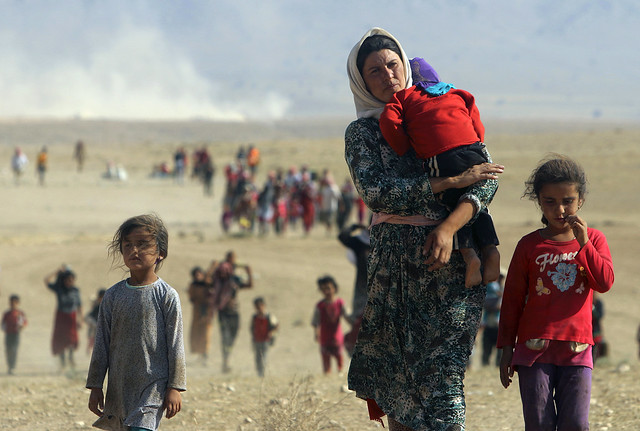
Displaced people from Iraq’s minority Yazidi sect, fleeing violence from forces loyal to Islamic State in Sinjar town, walk towards the Syrian border near the town of Elierbeh in Al-Hasakah Governorate. Islamic State militants have killed at least 500 members of the Yazidi ethnic minority during their offensive in north Iraq. August 11, 2014. REUTERS/Rodi Said

Jiejin Qiu, six months pregnant with her first baby, poses underwater during a photo shoot at a wedding photo studio in Shanghai. Reuters Photographer Carlos Barria photographed a person born in each year China’s one child policy has been in existence; from a man born in 1979, to a baby born in 2014, and asked them if they would have liked to have siblings. China, the world’s most populous country with nearly 1.4 billion people, says the one-child policy has averted 400 million births, saving scarce food resources and helping to pull families out of poverty. Late last year, China said it would allow millions of families to have two children, part of a plan to raise fertility rates and ease the financial burden on a rapidly ageing population. September 5, 2014. REUTERS/Carlos Barria
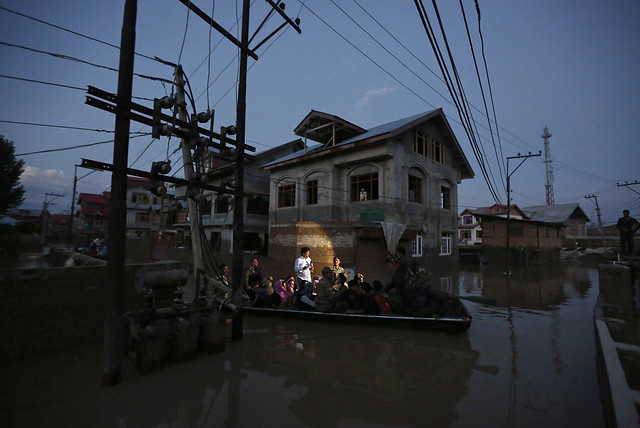
Flood victims are evacuated by boat from their flooded house in Srinagar. Flood waters started receding in Indian Kashmir, giving rescue teams a chance to reach tens of thousands of villagers stranded by the heaviest rainfall in half a century. Floods and landslides in the disputed Himalayan region have killed at least 450 people in India and Pakistan. September 10, 2014. REUTERS/Adnan Abidi
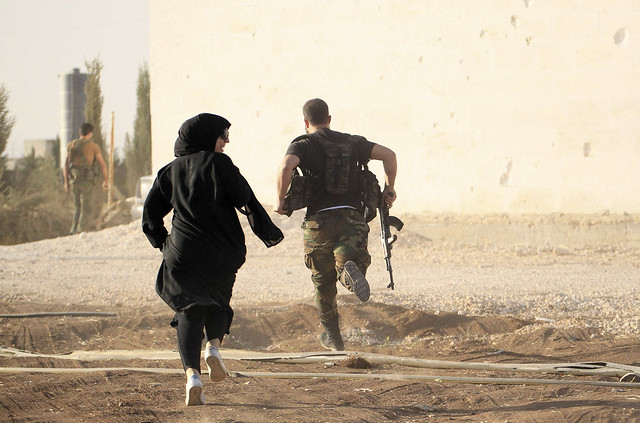
A woman reporter runs with a rebel fighter to avoid snipers on the front line of the battle against Islamic State fighters in the northern Syrian countryside near Aleppo. October 10, 2014. REUTERS/Jalal Al-Mamo

A Pokot girl, covered in animal skins, walks to a place where she will rest after being circumcised in a tribal ritual in a village about 80 km from the town of Marigat in Baringo County, Kenya. The traditional practice of circumcision within the Pokot tribe is a rite of passage that marks the transition to womanhood and is a requirement for all girls before they marry. More than a quarter of girls and women in Kenya have undergone genital cutting, according to United Nations data. October 16, 2014. REUTERS/Siegfried Modola
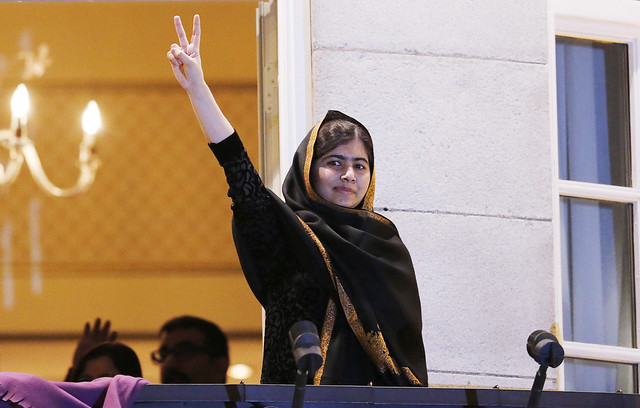
Nobel Peace Prize winner Malala Yousafzai flashes the ‘V’ sign from the balcony of her hotel in Oslo Pakistani teenager Yousafzai, shot by the Taliban for refusing to quit school, and Indian activist Kailash Satyarthi received their Nobel Peace Prizes after two days of celebration honouring their work for children’s rights. December 10, 2014. REUTERS/Suzanne Plunkett

